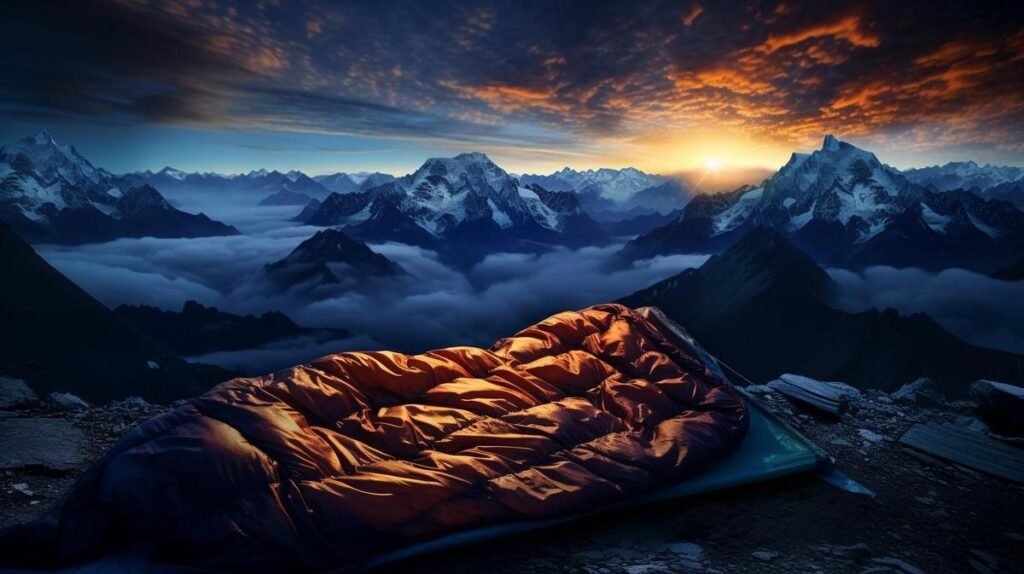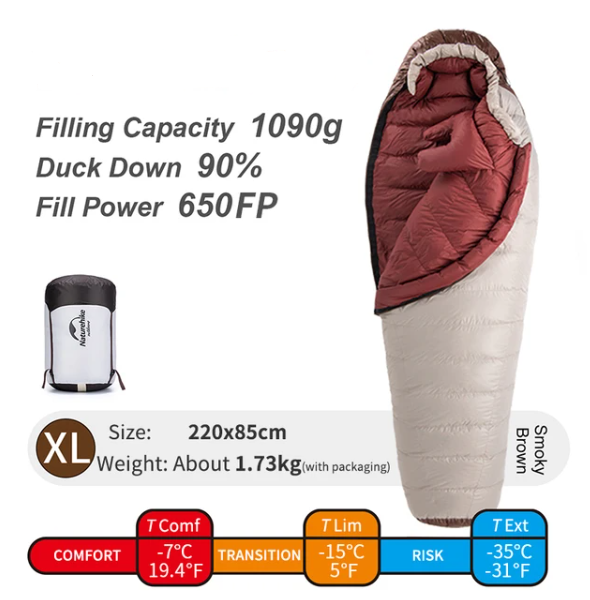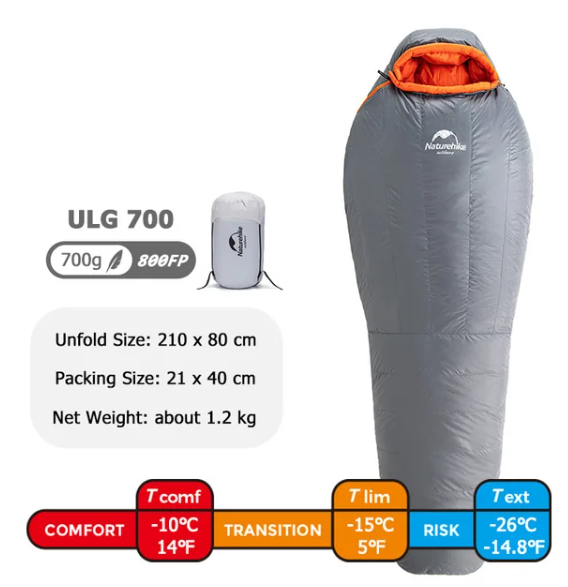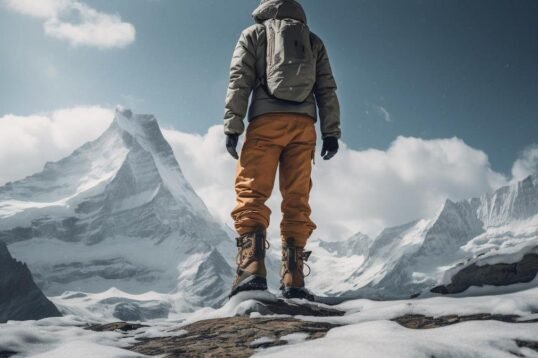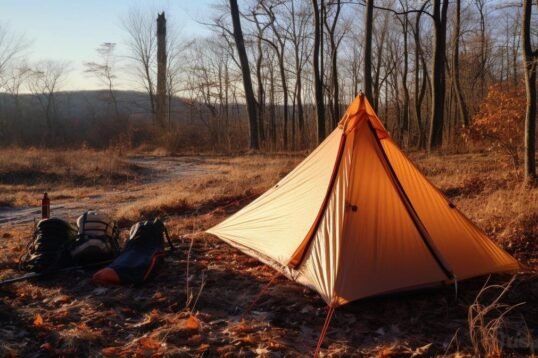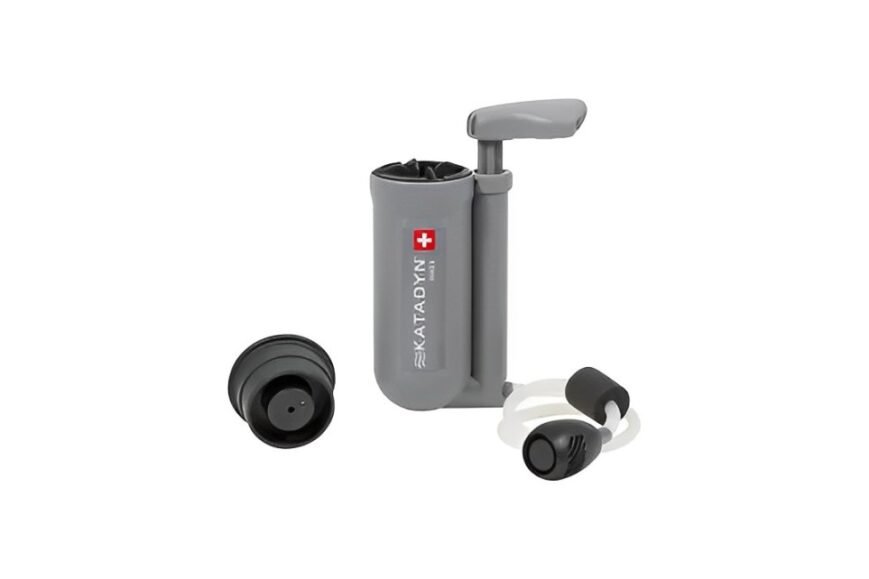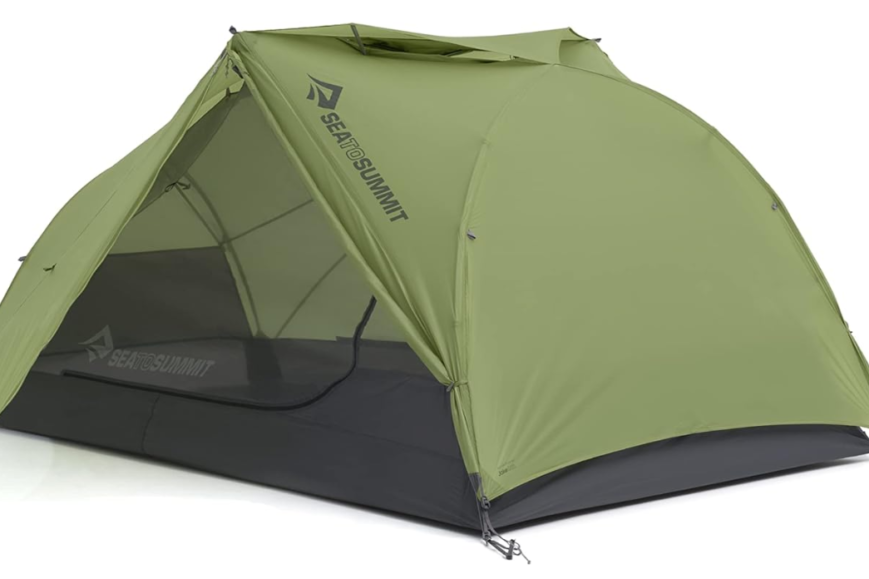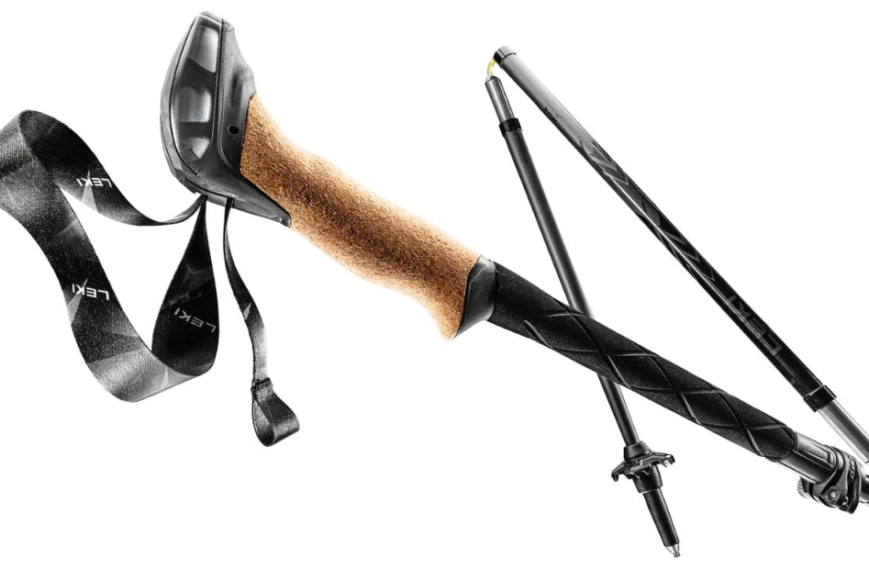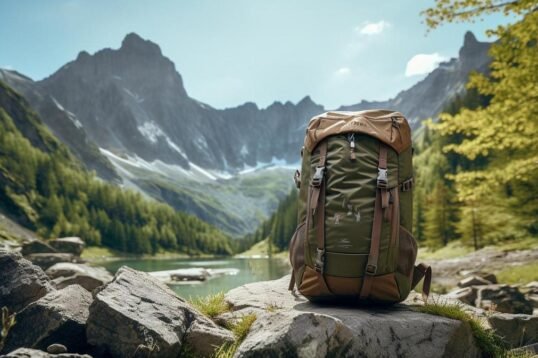- Look for a lightweight, packable, and warm sleeping bag that fits within your budget.
- Read reviews and check ratings for quality assurance; consider synthetic for cost-effectiveness, especially in wet conditions.
- Down sleeping bags can be affordable when on sale, and ensure warmth-to-weight efficiency.
- Maintenance (drying, storing loosely, and gentle washing) is crucial for longevity.
- Consider bag shape (mummy vs rectangular) for personal comfort and packability needs, and use sleeping bag liners for added warmth and cleanliness.
- Purchase sleeping bags during seasonal sales, and opt for last year’s models for added savings.
- Always check the temperature rating and quality of materials, even when buying budget sleeping bags.
Looking to stay cozy under the stars without breaking the bank? You’re in the right spot. We’re diving into the must-haves for budget backpacking sleeping bags. I’ll guide you through snagging a bag that’s both light on your back and your wallet. Let’s tackle the features that matter, from staying snug to not dragging you (or your savings) down. Get ready to score the perfect sleeping gear for your next adventures!
What Features Should I Look for in an Affordable Backpacking Sleeping Bag?
When you’re hunting for affordable backpacking sleeping bags, you want the best deal. But what features do you look for? Let’s dig in.
Best budget backpacking sleeping bags?
Look for lightweight sleeping options. Keeping your pack light makes hiking easier.
Criteria for Selecting a Budget Sleeping Bag
Compare weight, warmth, and cost. You need a sleeping bag that won’t break your back or your bank. It should also keep you snug at night.
Importance of Weight and Packability
A light bag that packs small is key. You’ll save space and energy carrying it on the trail.
Balancing Cost and Quality
Don’t just go for the cheapest bag. Check that it’s good quality too. A bag that tears or doesn’t warm you isn’t a good deal.
Features to Prioritize on a Budget
Make sure the zipper works well. A hood can also help to keep you warm. Find a bag that’s comfy and fits well. Materials should be strong and keep you warm for many trips.
This way, you’ll find a sleeping bag that gives you the best sleep under the stars, without emptying your wallet.
Budget Sleeping Bags Worth Checking Out
How Can I Compare Budget Sleeping Bags Effectively?
When shopping for a budget sleeping bag, start with good reviews. But where can you find reliable sources for budget sleeping bag reviews? Go online and check sites where backpackers share their sleeping bag reviews. They will often talk about what worked and what didn’t, which can help you decide on the bag that’s right for you.
You can also look at backpacker sleeping bag ratings for a quick idea of a bag’s quality. They can tell you how others feel about the warmth and comfort of the bag. And most importantly, they compare bags side by side.
When comparing budget sleeping bags, consider the insulation. Synthetic bags tend to be more cost-effective and work well when it’s wet. Down bags might be pricier but offer better warmth-to-weight ratios. So, think about how you will use your bag and choose the right type of insulation.
Next, look at the temperature rating. It tells you the lowest temp at which the bag can keep you warm. But be cautious. Ratings can vary based on who makes the bag and their testing methods.
Remember, low-cost materials may mean trade-offs in durability and performance. Cheap sleeping bags usually use lower-quality fabrics and fills. With use, they will wear out faster than the pricier bags. Yet, they can still be a great value if you’re new to backpacking or if you backpack only a few times a year.
In the end, choose a bag that balances cost, comfort, and durability to match your backpacking style.
Why Are Synthetic Backpacking Sleeping Bags a Great Budget Option?
Yes, synthetic backpacking sleeping bags are cost-effective. Synthetic insulation means you save money. Such bags last long and stay warm even when wet. They’re also great if you have allergies.
Synthetic bags hold up well with time and use. This makes them a smart choice if you’re watching your budget. The fibers in synthetic bags are sturdy. They bounce back after many trips. That means more adventures before you need a new bag.
These bags are champs in damp weather too. They keep you warm even when they get wet. This is because they don’t clump like down feathers do. This can be a lifesaver when you’re out in the rain or fog.
Also, think about how you feel about your sniffles. If you get allergies, synthetic bags might be your best bet. They don’t have the allergens that sometimes hide in down bags.
I like how I can care for my synthetic bag without stress. I just toss it in the washer and it’s good to go. This is way easier than down bags that need special attention. It’s about making life on the trail simple, so you can focus on the fun.
In brief, picking a synthetic backpacking sleeping bag means saving cash, staying cozy in all conditions, easy wash-ups, and sneeze-free nights under the stars. Who doesn’t want that on a budget?
Can Down Sleeping Bags Be Affordable?
You want a warm sleeping bag for less cash? You got it! Let’s find down sleeping bags under $100. First, know what down is. It’s the fluffy stuff from birds that keeps them warm. It’s light and packs small, which backpackers like. But, can we find it cheap? Yes, we can!
How to find down sleeping bags under $100?
Look for sales or older models. Some might cost a bit more but stay near $100.
Pros and Cons of Down Insulation on a Budget
Pros? Down bags are light and warm. They last long if you care for them. Cons? When wet, down loses warmth. And they can cost a bit more than synthetic.
Ethical Concerns with Down Products
Some folks worry about how birds are treated. Look for bags with ethical down, it means birds were treated well.
Maintenance and Care for Down Sleeping Bags
Keep them clean to last long. Air them out after trips. Wash gently and dry well.
Longevity and Value for Money
Down can last years! So spending a bit now can save money later. Keep it in a big bag or hung up at home. Don’t store it squished!
To sum it up, getting a down bag on a budget needs a bit of hunting. Check for deals and keep them well. They keep you cozy for many trips. Check out more on a guide on affordable down sleeping bags to help you pick!
How Light Can a Budget Backpacking Sleeping Bag Be?
The lightest budget backpacking sleeping bags are around two pounds. When choosing a cheap ultralight sleeping bag, consider its weight. A good bag won’t slow you down but will still keep you warm. Look for compact sleeping bags for backpacking that weigh less but still offer comfort.
Light bags mean less to carry on your back. This is key for long treks. Aim for ultralight sleep systems for less. These systems bring together a light bag and other gear to save weight. Materials like nylon make bags light and easy to pack. But they can still be tough and warm.
With weight, balance is vital. A light bag that can’t keep you warm is no good. Always check the warmth of the bag, known as the “temperature rating.” Warmth often comes from the filling inside the bag. Down is light and warm but can be pricey. Synthetic is cheaper and still good for warmth.
Remember, a bag that’s light and cheap but rips or leaks is no bargain. The best choice is one that offers a mix of light weight, warmth, and durability. Look for options within your budget that meet these needs for a great outdoor experience.
What Are the Best Budget Sleeping Bag Brands?
Which brands offer the best value for budget sleeping bags? Brands like Kelty, Coleman, and Teton lead here.
Kelty, Coleman, and Teton are popular budget sleeping bag brands. Each brand is known for making dependable, durable gear. They provide top budget sleeping bags that balance cost and comfort. These brands have earned a place in many campers’ hearts.
Niche brands also offer backpacking sleeping bag bargains. They sometimes focus on one type of gear, like sleeping bags. This can mean they put more care into their products. It also can mean a better price for you.
Brand reputation is key. Do people trust the brand? Do they say the bags last? Some budget brands might even offer a warranty. This means they’ll help you if there’s a problem with your bag. But remember, customer service may vary with the price you pay.
Think about these things when choosing. Look at what fits your adventure and wallet. More than the label, the right sleeping bag will keep you cozy without breaking the bank.
Why Is Sleeping Bag Temperature Rating Crucial for Budget Bags?
How does the sleeping bag temperature rating affect my choice in budget bags? The temperature rating tells you the lowest temp you can use the bag in and still be warm. This guides you to choose a bag that keeps you comfy on trips.
If you plan to camp in chill weather, you need a bag that can handle the cold. A proper temperature rating is a must. This is vital for staying safe and warm at night. Cheap bags might not be true to their ratings, so be careful and read reviews.
Look for a seasonal backpacking bag that fits the weather you’ll face. Summer bags are lighter and cooler. Winter bags have more padding to trap heat. Think about where and when you’ll camp before picking a budget bag. You want to match your bag to the season for the best sleep outside.
Budget bags might not be as precise as costly ones. Yet, you can still find good quality. Just know that a budget bag’s rating might be off by a few degrees. Plan for that and bring extra gear like liners to boost the bag’s warmth without spending lots.
In short, always check the sleeping bag temperature rating when searching for a bargain. This small detail is key to happy, cozy nights under the stars. Choose wisely and stay snug, even when your wallet feels light!
How Does the Shape of a Backpacking Sleeping Bag Influence My Comfort and Packability?
What are the benefits of different backpacking sleeping bag shapes? Mummy bags heat you up fast and pack down small. Rectangular bags offer more room to move but take up more space.
Both mummy and rectangular shapes have ups and downs. A mummy sleeping bag is tight. It hugs your body. This makes you warm and it’s good for cold nights. Because it’s close to you, there’s less air for your body to heat. It means you stay warm with less work. And when you pack it, it takes less room. It’s smaller. Easy to carry. That’s a big win for hikers who count every ounce.
But some people feel too wrapped up in a mummy bag. If you move a lot in sleep, it’s tight. Then comes the rectangular bag. It’s like your bed at home. You have more space. Your feet and arms can move free. So, if comfort wins over cold, you might like this more. But know this – they bulk up big. They’re heavier. You trade comfort at night for more weight on the trail.
Packing a mummy bag is an art too. Roll it tight. Squeeze out air. It becomes small. Some have special straps or sacks to squish it down more. Rectangular bags need different skills. You have to fold and roll in a certain way. Or else it won’t fit in your pack.
Don’t forget, some bags are just for women or men. They fit our bodies different. Girls’ bags often have more room at the hips and are warmer at the feet.
To wrap up, shape matters a lot. It changes your sleep and how you pack. Pick what fits your trip and sleeping style best.
What Sleeping Bag Liners Should I Consider for Extra Warmth and Hygiene?
Sleeping bag liners can indeed improve warmth and cleanliness on a budget. They are thin sheets that line the inside of your sleeping bag. If you need extra warmth, a fleece or microfiber liner is a good pick. For warm weather, try silk or cotton. A liner also makes your bag last longer. It keeps the bag clean, so you have to wash it less. This means less wear on the fabric.
What types should you think about? Silk is light and warm – great for cold trips. Fleece adds heat, too, but is heavier. Cotton is affordable and comfy for summer hikes. Now, many liners come treated with antimicrobial stuff. That means less stink and more days between washes.
Liners really help maintain your bag. The inside stays cleaner, so it’s less work for you at home. Wash the liner, not the whole bag, and you’re good to go. This care routine saves time and keeps your budget bag in good shape.
You can also use a liner alone on super hot nights. This way, you won’t overheat but stay protected from bugs. Remember, a liner should be on your list for a budget sleeping bag care routine. It’s a small add that gives a big boost to bag warmth and lifespan. Plus, you stay cleaner on your adventures.
How Do I Maintain a Budget Sleeping Bag for Longevity?
To make your budget sleeping bag last, follow these key steps:
What are the best practices for maintaining a budget sleeping bag?
- Cleaning and Drying Techniques: Always dry your bag after each trip.
- Storage Tips to Preserve Insulation Quality: Hang your bag or store it loosely.
- Repairs and Patching on a Dime: Use a sewing kit for small rips.
- Product-specific Maintenance Recommendations: Check your bag’s care label.
Cleaning and Drying Techniques
After each trip, shake out any dirt. For sweat and odor, wash your bag sparingly. Only use a gentle, non-detergent soap. Spot clean small areas if you can. Dry your bag completely before storing to prevent mildew.
Storage Tips to Preserve Insulation Quality
Do not squash your bag! Store it loosely in a large cotton or mesh bag. This gives the insulation room to breathe and maintain its loft. Avoid plastic bags and tight compression sacks for long-term storage.
Repairs and Patching on a Dime
Small rips or tears? No need to fret! A basic sewing kit can fix this. Sew the rip carefully or use a patch kit. You can find patch kits at outdoor stores. Quick fixes keep your bag in shape for the next adventure.
Product-specific Maintenance Recommendations
Different bags need different care. Check the label for your bag’s specific needs. Follow these to stop damage and keep the warranty valid. Synthetic bags can usually handle more wash than down bags.
Remember these tips to care for your bag! Proper maintenance makes any budget sleeping bag a smart, long-term buy for endless outdoor adventures.
Can a Sleeping Bag Fit In My Low-Cost Lightweight Backpacking System?
Sure, a sleeping bag can fit into a low-cost lightweight backpacking system. For hiking, your sleep system is key. You want it light to make walking easy. You’re looking for a bag that’s both comfy and light. You can indeed find lightweight bags for hiking without spending too much.
When you pack light, every ounce matters. The trick is not about giving up comfort. It’s about smart choices. Find bags that balance weight and comfort. These bags should not break the bank. Look for sleep setups for lightweight trips that critics praise.
A sleeping bag’s job in a lightweight setup is huge. It keeps you warm and takes little space. It should fold tiny to fit your pack. This means you need tools and accessories that help you pack. Compression sacks are your friend here. They squeeze your bag into a teeny bundle.
Some hikers fear a cheap bag means cold nights. Yet many budget bags keep you just as warm. With smart packing and a good bag, you’ll sleep snug and not feel weighed down.
Check out stories of hikers who have nailed this. They balance cost, weight, and comfort. Learn from their budget sleeping system wins. They show it’s doable to hike light and tight on cash. They prove you don’t need lots of money for a great sleep outside.
So, can you hike with a good, cheap, light sleeping bag? Yes! Keep it simple. Look for those three things: low weight, high comfort, small price. Then enjoy your adventures, and sweet dreams under the stars!
What Are Some Insider Tips for Finding Backpacking Sleeping Bag Deals?
Where can you find the best deals on budget backpacking sleeping bags? Start by looking during seasonal sales. Shops often mark gear down at the end of the season. To save, buy last year’s models. They’re often much cheaper but still great. Use coupons and codes for extra discounts. Check trusted online marketplaces for deals.
Sales give the best price drops, but timing is key. Shop when seasons change, as retailers clear old stock. Last year’s sleeping bag models are less pricey but have quality. Coupons and discount codes shave off a few more bucks. Big online stores often have the best outdoor gear offers.
Hunt for backpacking sleeping bag bargains at the right time. Winter ends? Stores may slash prices on camping stuff. Look for discount backpacking sleeping gear closeouts. These times are great windows for budget buys.
Buying models from the past year can save you money. Shops want to sell them to make room for new items. Many times these bags have top features and solid build at a cut rate.
Save more with coupon codes and discounts. Signing up for newsletters helps. They give you deals and promos right in your inbox. You get to pocket more cash this way.
Lastly, use known online places for buying gear. They may have the best outdoor gear retail offers. Read reviews to know you’re getting a good deal. Customer feedback can tell you if it’s worth it.
So, buying smart can get you top-notch gear. You don’t have to spend a lot to enjoy the outdoors!
Criteria for Selecting a Budget Sleeping Bag
When looking for a budget sleeping bag, consider its weight and how small it packs down. A lightweight bag that compacts well makes hiking more enjoyable. It’s easier to carry and leaves room for other gear. Check the temperature rating too, to ensure you stay warm at night. Quality matters, even on a budget. Look for good stitching and a durable zipper.
You want the best bag without spending much, right? First, think about when you’ll use it. Summer or all year? If you camp when it’s cold, get a bag rated for lower temperatures. Next, comfort and size are important. You’ll sleep better in a bag that fits well. If you toss and turn, a mummy shape might be too tight. Consider a semi-rectangular one for more room.
Materials are key in any bag. Synthetic fills are cheap and dry fast if they get wet. When it comes to down, it’s warm and light but can get pricey. Still, there are down bags that won’t break the bank.
So, when you’re choosing, ask, “Will this bag meet my needs for where and how I camp?” Use reviews and ratings to help. They offer real experiences from other backpackers. And don’t forget about the warranty. A good one can save you money in the long run if your bag ever breaks or doesn’t hold up as it should. Keep these tips in mind, and you’ll find a great bag that lets you sleep soundly under the stars, all while saving you money for your next big adventure.
Conclusion
In this post, we combed through what to scout for in budget-friendly sleeping bags, covering the need to balance cost against features like weight, packability, and warmth. We weighed synthetic against down bags and examined how shape and temperature ratings play into your comfort outdoors.
Remember, the right sleeping bag ups your game in the wild without emptying your wallet. Look out for sales, consider brands that match quality with value, and care for your gear. Smart choices will ensure you stay snug and sound on your next trek. Keep these tips in mind, and sleep well under the stars!
![]()

